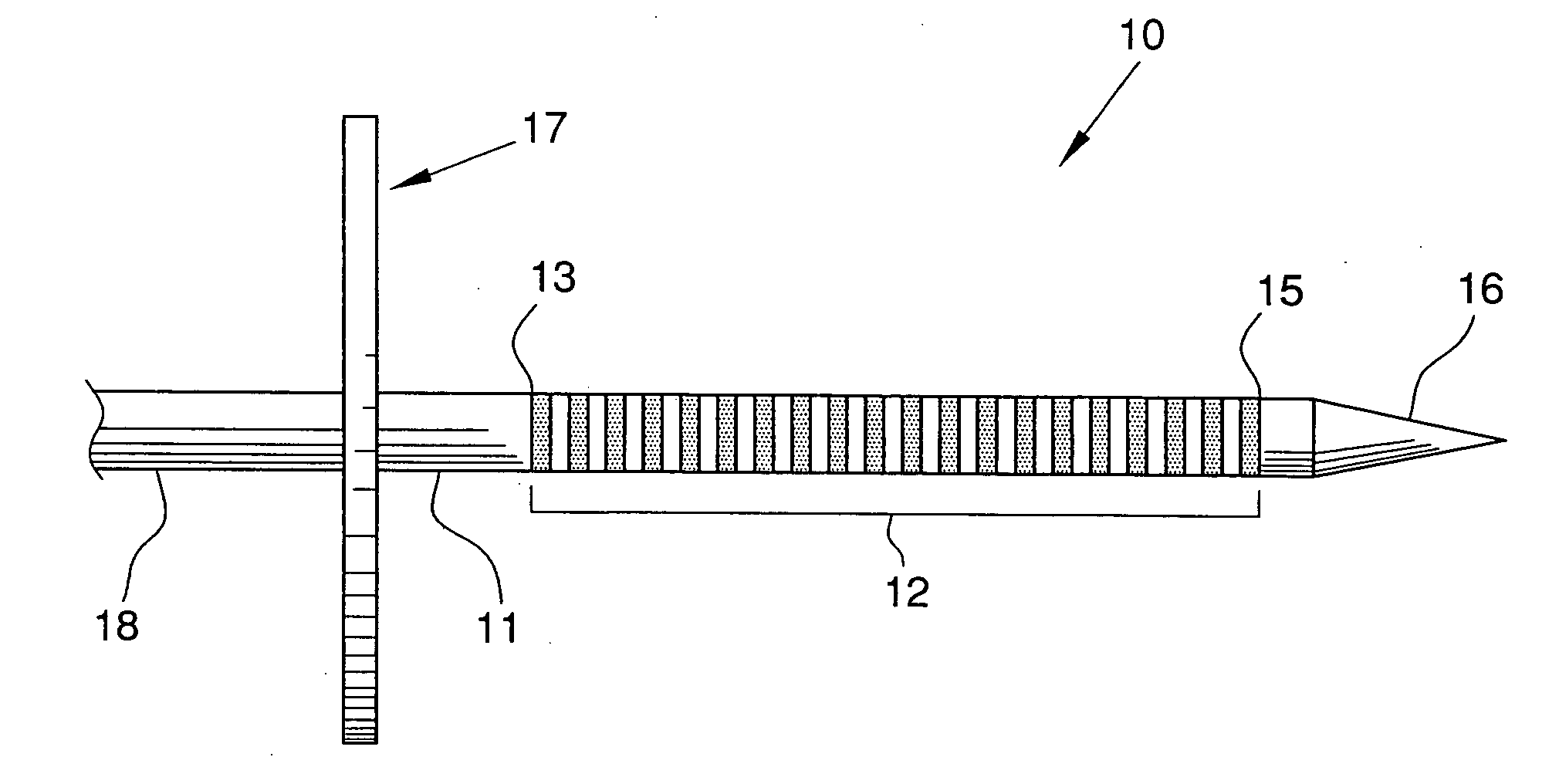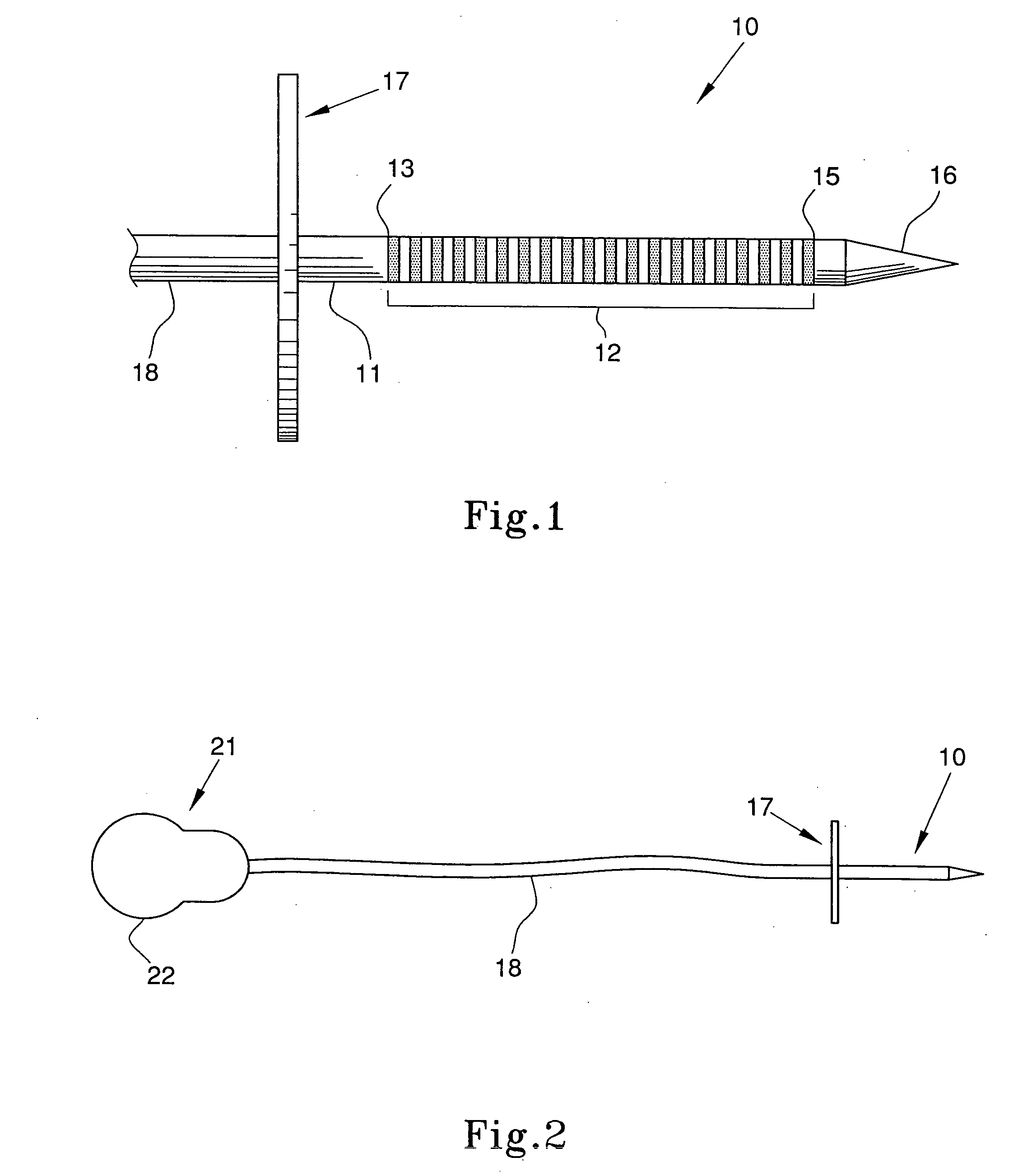Auditory midbrain implant
a technology of implanted ears and midbrains, applied in the field of implanted ears, can solve the problems of conductive hearing loss, impeded normal mechanical pathways for sound to reach the hair cells in the cochlea, deafness is sensorineural hearing loss, etc., and achieve the effect of reducing the size of the lead, and being flexibl
- Summary
- Abstract
- Description
- Claims
- Application Information
AI Technical Summary
Benefits of technology
Problems solved by technology
Method used
Image
Examples
Embodiment Construction
[0078] One embodiment of an electrode array that is implantable within the inferior colliculus of the midbrain of an implantee and adapted to provide electrical stimulation thereto is depicted generally as 10 in FIGS. 1 and 2.
[0079] While described as implantable in the inferior colliculus, it is to be appreciated that the electrode array and the system in general as described below can, with necessary appropriate modification, also be used in the treatment of movement disorders and other neurological disorders, such as Parkinson's disease, Dyskinesia, Tourette's Syndrome, Essential Tremor and Epilepsy, to name a few. In this regard, it is to be understood that the electrode array is also suitable for insertion into other appropriate regions of the brain, such as the Subthalamic Nucleus (STN), the Globus Pallidus (GPi), and the Thalamus to provide multi-channel stimulation of these regions. By providing an increased number of electrodes inserted into these regions with the present ...
PUM
 Login to View More
Login to View More Abstract
Description
Claims
Application Information
 Login to View More
Login to View More - R&D
- Intellectual Property
- Life Sciences
- Materials
- Tech Scout
- Unparalleled Data Quality
- Higher Quality Content
- 60% Fewer Hallucinations
Browse by: Latest US Patents, China's latest patents, Technical Efficacy Thesaurus, Application Domain, Technology Topic, Popular Technical Reports.
© 2025 PatSnap. All rights reserved.Legal|Privacy policy|Modern Slavery Act Transparency Statement|Sitemap|About US| Contact US: help@patsnap.com



